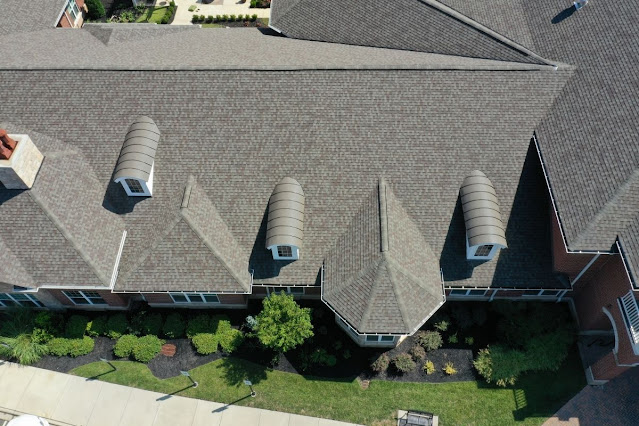The Ultimate Guide to Metal Roofing Underlayment: What Every Homeowner Should Know
Metal roofing is a durable and energy-efficient choice for homes, offering longevity and resilience against harsh weather conditions. However, the performance of a metal roof heavily depends on its underlayment—a critical yet often overlooked component. In this guide, we’ll explore everything you need to know about metal roofing underlayment, its types, benefits, and installation considerations.
What Is Metal Roofing Underlayment?
Metal roofing underlayment is a protective barrier installed beneath the metal panels of a roof. It acts as an additional layer of defense, shielding the roof deck from water infiltration, temperature fluctuations, and other external elements. Underlayment is essential for preventing leaks, enhancing insulation, and improving the overall lifespan of the roofing system.
Why Is Underlayment Important for Metal Roofs?
1. Protection Against Water Damage
Underlayment prevents water from seeping into the roof deck due to condensation or leaks caused by damaged panels or flashing. This is especially crucial for areas prone to heavy rainfall or snow.
2. Temperature Regulation
Metal roofs can expand and contract with temperature changes. A good underlayment helps manage this movement and reduces the transfer of heat or cold into the home, improving energy efficiency.
3. Noise Reduction
Metal roofs are known to amplify external noises like rain or hail. Underlayment acts as a cushion, dampening sound and creating a quieter indoor environment.
4. Enhanced Durability
By providing an additional layer of protection, underlayment increases the roof’s resistance to wear and tear, extending its overall lifespan.
Types of Metal Roofing Underlayment
Selecting the right underlayment is crucial for optimizing your roof’s performance. Here are the main types:
1. Felt Underlayment
Felt underlayment is made of organic or synthetic materials saturated with asphalt. It is the traditional choice for many roofing systems.
Pros:
- Affordable and widely available.
- Offers basic protection against water and weather elements.
Cons:
- Less durable compared to modern options.
- Can tear or degrade under prolonged exposure to heat and moisture.
2. Synthetic Underlayment
This is a more advanced option made from polypropylene or polyethylene.
Pros:
- Lightweight, durable, and tear-resistant.
- Superior water resistance compared to felt.
- Resistant to mold and mildew growth.
Cons:
- More expensive than felt underlayment.
3. Self-Adhering Underlayment
Self-adhering underlayment comes with an adhesive backing, making it easy to install.
Pros:
- Excellent waterproofing capabilities.
- Suitable for roofs with low slopes or areas prone to ice dams.
Cons:
- Higher cost due to its specialized features.
Key Features to Look for in Metal Roofing Underlayment
When choosing underlayment for your metal roof, consider the following factors:
1. Waterproofing Capability
Ensure the underlayment is highly water-resistant to protect the roof deck from moisture and leaks.
2. Heat Resistance
Metal roofs can become extremely hot during the summer. Select an underlayment that can withstand high temperatures without degrading.
3. Tear Resistance
Durability is crucial for underlayment, especially during installation. Opt for materials that resist tearing and wear.
4. Breathability
A breathable underlayment prevents moisture buildup beneath the metal panels, reducing the risk of mold or mildew growth.
Installation Process for Metal Roofing Underlayment
Proper installation is vital to the effectiveness of your metal roofing system. Here’s an overview of the installation process:
1. Prepare the Roof Deck
The roof deck must be clean, dry, and free of debris to ensure the underlayment adheres properly.
2. Choose the Right Underlayment
Select a product suited to your local climate and roofing needs. For example, synthetic or self-adhering underlayment is ideal for extreme weather conditions.
3. Apply the Underlayment
- Begin at the bottom edge of the roof, rolling out the underlayment horizontally.
- Overlap each row by at least 4 inches to ensure proper coverage.
- Secure the underlayment with roofing nails or staples, following the manufacturer’s guidelines.
4. Seal Penetrations
Seal around vents, chimneys, and other roof penetrations with adhesive or flashing tape to prevent leaks.
5. Inspect for Gaps
Ensure there are no gaps or wrinkles in the underlayment before installing the metal panels.
Maintenance Tips for Metal Roofing Underlayment
Regular maintenance can prolong the life of your underlayment and the overall roofing system:
- Inspect Annually: Check for any signs of wear, tears, or moisture buildup.
- Clean Debris: Remove leaves, branches, and other debris from the roof to prevent water pooling.
- Address Leaks Promptly: If you notice any leaks, address them immediately to prevent damage to the underlayment.
The Cost of Metal Roofing Underlayment
The cost of metal roofing underlayment varies depending on the material and quality. Here’s a general breakdown:
- Felt Underlayment: $0.15–$0.25 per square foot.
- Synthetic Underlayment: $0.50–$0.75 per square foot.
- Self-Adhering Underlayment: $1.50–$2.50 per square foot.
While synthetic and self-adhering options may seem expensive, their durability and performance often outweigh the initial cost.
Conclusion
Investing in the right metal roofing underlayment is essential for maximizing the performance and longevity of your metal roof. By understanding the different types, features, and installation methods, you can make an informed choice that suits your home’s needs and budget. Properly installed and maintained underlayment ensures your roof remains resilient against weather, noise, and wear, providing peace of mind for years to come.
If you’re planning to install or replace your metal roof, consult with a professional roofing contractor to ensure the underlayment is chosen and installed correctly. This small yet significant step will protect your home and enhance its value in the long run.




Comments
Post a Comment